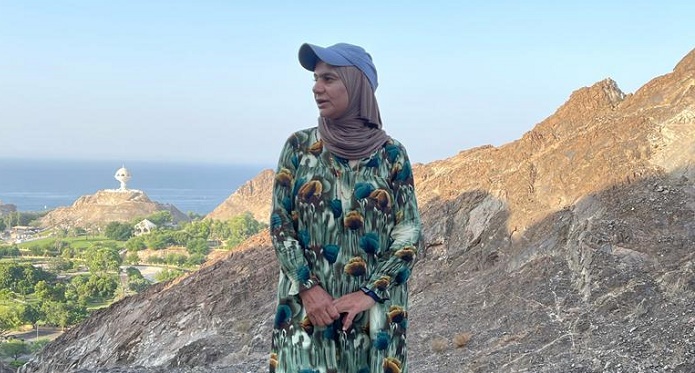
Muscat: For veteran trekker Hadiya Al-Zakwani, the trip to Yiti was another outdoor routine for an outdoor sport she loves taking part so much giving her another thrill to be with friends on similar passion.
But on a bright morning on May 27 this year, Hadiya never thought this trip would not be another pleasurable and enjoyable outing like in the past. When she left home early in the morning, little did she know that it would be a trip of excruciating pain that would last more than 24 hours.
She headed to a beautiful hamlet of Umqbir which is near Yiti. The little town is a heaven for trekkers and hikers with its meandering rocks, mountains and plateaus. It was a typical day for her with a fresh, warm breeze blowing on her face and the smell of wild, thorny plants in the air.
“That day, I enjoyed the rock to rock jump, going down the tracks and climbing hills where I could see everything below me when I was taking a pause to admire the view around me,” Hadiya told Times of Oman.
Perhaps an hour later, she could not remember exactly, her foot was caught in mud. She slipped and started sliding down. Her leg turned and she fell flat on her face on the rocky ground, yelling with pain.
“I did not realise then but my friends said that I broke my shin. All I could feel was this unbearable pain coming from my leg,” Hadiya recalls painfully.
There were four fellow trekkers with her when it happened. They used the first-aid kit to relieve the pain but that did not help because none of them were trained to do anything more. Other trekkers came to help but they were also untrained to handle the injury. It was 10 in the morning when her painful ordeal started.
“They wrapped a life jacket around my leg to try to keep my leg stable. We had to get down to our vehicles so they could get me to the hospital. But we were on a difficult, rocky terrain and too far from rescue,” Hadiya said.
While other trekkers were helping her to get down, one of them went out to get help, suggesting perhaps an airlift would be quicker than making a slow but painful descend to the flat ground. It was a snail’s pace progress to get her down. Her friends finally got another group of trekkers to go up there to offer extra help to carry her down.
It was five in the evening by the time they got down, about seven hours since she had the accident. But they still needed to cover an 8-km winding path to get to their cars. They made a stretcher from ropes and carried her. It was a little faster but they went through waterfalls, thorny trees, slippery hills and rocky tracks.
“At one time, the stretcher broke and we had to stop while I was trying very hard to ignore the intense pain. She spent a painful night in the open with her fellow trekkers beside her.
“My son arrived at six in morning to bring a proper stretcher. The rescue helicopter arrived five hours later to airlift me to Khoula hospital. Besides the pain, my pressure went up and my sugar level dropped,” Hadiya said.
Hadiya says she is very grateful to her fellow trekkers for helping her in her long painful ordeal.
“My son reported my accident to the Civil Defence in the night but they arrived in the morning. I expected to get pain killers when they arrived in the morning but did not get it,” Hadiya said.
She advised that, in order to support both domestic and international tourism, popular trekking and hiking sites must have safety measures to help trekkers when they meet with accidents. She also suggested that a speedy recovery process must be in place for injured trekkers.